The Living Desert: Black Canyon 100K Race Report
I have a thing about the desert.
When I was young, maybe six or seven, being American was my only connection to my dead father. My mother was French, my stepfather Canadian, we lived on the Canadian Prairie, and all I had were a few old photos and some vague, inaccurate memories to piece together my own identity.
I collected whatever information I could about America. I had a book on Indian Chiefs the tooth fairy left under my pillow. I was the first tooth I’d lost, and I’d actually lost it – I looked in the mirror after dinner and it was gone. I was sure I was going to be deprived of this great tooth fairy experience since I hadn’t the tooth to exchange. My mother suggested I write a note explaining what had happened. The Tooth Fairy would probably take my word for it. I did, just in case, but went to sleep figuring I was going to be ripped off. The morning morning I woke up and found the book on Indian Chiefs. My Tooth Fairy never left money or little prizes under the pillow. Only books.
A year or two later came a box inherited from an older step-cousin. Inside was a stereoscope and a handful of old discs. These were of Barnum and Bailey’s circus in the 1940s. Clowns and tightrope walkers and Big Top tents, all at night. There were also a couple of books, and the one that I remember was a book of Walt Disney’s “The Living Desert”, the first Disney documentary ever. It was a big book, full of big color prints, made before the days of color book printing, so the images were printed separately and glued inside the book. Some of them were loose, and the book needed to be handled carefully, like some ancient parchment.
Out of this and a handful of photos of baby me with my father and older half siblings, both also gone from my life with his death, photos in the Dakota Badlands, with chuck wagons and desolate landscapes, I formed my first image of America and of my heritage, an image that is still the foundation of how I see this country, or maybe the ideal that it can never live up to.
It’s an image of the Sonoran Desert, and every time I run through it I feel like I’ve come home.
Last year’s race was a bust. This year’s race was a joy.
Last year was the inaugural running of Black Canyon 100K. Dehydrated due to sickness, and armed with a terrible race strategy, I went belly up in the 95 degree heat and dropped at mile 24. It was a mess.
This year’s race was completely different. Black Canyon Trail really is my dream course: rough, rocky, exposed, like 62 miles of running the Mt. Lowe/Mt. Disappointment/San Gabriel Peak trails. Unfortunately, a dream course and fun doesn’t necessarily make for the sort of high drama a race report requires if it aspires to epic status. That’s okay. Nobody really needs to hear about middle-of-the-pack battles anyhow. Running Black Canyon 100K was a joy, and that’s enough.
Here’s what happened.
The race begins with a lap around the high school track and then a mile or so of road through the tiny town of Mayer, Arizona, near the edge of Prescott National Forest.
I got to Mayer feeling good. Last year, the excitement started before we got to Mayer. I’d had too much coffee before boarding the shuttle for the 45 minute drive to the start, a beat-up old Partridge Family style school bus which bounced along on bad shocks. About 20 minutes of bouncing in the back and I needed to piss, really really bad. I tried various positions, and a few meditations, and managed to stave things off for another 25 minutes or so, but getting all the way to Mayer without wetting myself was looking unlikely. The bus was dark, and the guy ahead of me had a sign on him saying he was vision impaired. I screwed off the top of my empty water bottles and was trying to steady myself to casually piss in them in a way that would look perfectly natural if anyone were to turn around and see me. Luckily, the bus turned off the highway and we were in Mayer. Luckily, I learn from my mistakes. This year I pissed on a lamp post before getting on the bus.
The first five miles of running go very gently up, an almost imperceptible grade. The first two are on paved road, the next on dirt road, and then we turn onto the trail itself. Miles 5 through 20 are almost entirely downhill. The trail isn’t necessarily wide but the area is; there’s a feeling of expansiveness as the sun rises and the day warms. It’s beautiful, rural, ranch country at the top; dustier, sandier, and rockier as you descend into the canyon.
The heat kicks in and the rocks start at around mile 24. A runner’s success in the race will depend largely on how well they are able to deal with these two things. The climbs are all gentle, and the elevation gain – about 5,000 feet – is minimal in comparison to mountain races, so it’s easy to get fooled into thinking this is going to be a fast course, but it’s not. The trail is technical. This is not easy running. It’s also completely exposed, and while only February, the Arizona sun can still bake you if you’re used to winter cold.
The course flattens out after the Gloriana Aid Station at mile 13, and stays that way for a few miles, sandy, winding, getting slightly narrower and rockier, before hitting a three mile downhill, a short climb, and another downhill, this one gentler in slope but finally getting narrow and technical.
I ran a meditation through my head in this downhill, a Stoic meditation that is intended to help us deal with stressful situations calmly, with equanimity. The meditation works by imagining a past situation, replaying it in your mind, trying to relive the situation, and trying to modify your reaction to it, since it’s only the reaction that matters. The meditation would have me imagine the setting, but I didn’t need to. This was the exact section in which I fell apart during last year’s race. The meditation was unnecessary, really, because my reaction was already different. My foot hurt, I was feeling a little ragged, but this was really a joyous moment because unlike last year, all was great! I cruised into the aid station, refilled my bottles, had someone quickly examine my eye, (a bug flew into it, and the burning trashed my vision for a mile or two) and got a rundown of the next 8 miles, all in less than 3 minutes. And I was off.
The trail continued down, which was a surprise; I thought we’d reached the bottom. It was getting hot. I reckoned I had 3 miles per water bottle. Things were getting rockier, and this was fun. 26 miles came the descent down to the Agua Fria River, which flows through Black Canyon, after which the trail (and race) are named. The river is more of a stream meandering gently through a sandy, rocky wash. The guy just ahead shouted back to me to follow him, he knew the way through, and I did, sparing me a few minutes of having to search because there was no way to mark the trail in the sand.
From there, a few miles climb up, the beginning in thick sand, all exposed, and then Black Canyon City aid station, mile 38. The trail started getting rockier.
There was a short out-and-back to the 38 mile aid station at Black Canyon City. This would be the one true pit-stop of the race. I ate some food, got out my lights, made sure I had all I needed, took in some extra water, and used the restroom before heading back out. There was a mile climb on the out-and-back, and then a gentle downhill to yet another stream crossing. I passed a few runners heading to the aid station on the out-and-back. I expected that Andrea and I would cross, but that didn’t happen. Aside from that I saw no one for a few miles.
There was a guy behind me. He was talking, and singing, and making a lot of noise. I wasn’t sure how much of it was directed at me, but we were the only two people around, so if it wasn’t me he was talking to himself.
I popped in an earbud and turned the music up. Now the chattering played behind it, not as noticeable unless I concentrated, which I tried not to do.
A mile passed, and then another, and another. The guy was getting closer. He was running the hills, or trying to, and it was taking it out of him. He’d be closer at the top of each hill and then I’d put distance between us on the downhill and he’d make it back on the up, and so it went for about five miles. Finally, somewhere around mile 48, he was right behind me, no longer talking or singing, just gasping for air with a look of intense concentration. I stepped aside and let him pass.
The Living Desert
The Arizona desert gives me this strong connection to my past, and to my identity, a connection that comes from the land, the harsh but vibrant Sonoran Desert, with the Javelinas, tarantulas, scorpions, snakes, roadrunners, and cactus, the Saguaro cactus in particular, unique to the Sonoran Desert and a critical part of the landscape I created out of those random and disparate sources, a landscape that my identity and my heritage.
It’s a vibrant desert. Yes, it’s bone dry, so much so you need to be careful; your sweat evaporates before you realize you are sweating. It sucks you dry. But the colors are rich, even under the harsh sun. The cactus are all sorts of shades of green, and also red and brown. There are purple flowers everywhere, and so many plants. The earth and the rocks are a deep reddish brown, the sky so blue. This is all I’d imagined it to be when I was little, and more.
And the rocks… It’s a good thing I enjoy running on loose rocks, because if I didn’t it would have seemed relentless. Rocks, rocks, and more rocks. Every foot plant requires a split second of consideration. You need to pay attention or else you might trip and fall. There were a lot of bloodied runners crossing the finish line both this year and last. Ankles roll easy if you’re not careful, and you can exhaust yourself if you tense up trying to pick your way through technical trails. This is the stuff I love to run, though, and those downhills were nice and relaxed and never effortful even as I pulled away from whoever was right behind me.
My usually precarious mental state was pretty good!
At some point in every race, I ask myself why I’m doing this and consider dropping at the next aid station. It seems I always need to talk myself down from some ledge, and yet at Black Canyon it wasn’t happening. Yes, my right foot was throbbing, but not so much that it was a problem. Yes, it was warm, but it was also about 15 degrees cooler than last year, and there was always a breeze. Besides, I like the heat. It’s the cold I struggle to get moving in.
I was passing people, increasingly so as we got deeper into the race, and the people I was passing were struggling. Folks were gassing out. Plenty had that 1,000 yard stare that seems to characterize ultrarunners near the end of a long race. In comparison, I felt fresh. I’d been saving it up for the last quarter of the race, whereas they looked like they’d all underestimated the course.
The sun was getting low. The desert is particularly spectacular at this time of day, and once it gets dark and things cool off, it comes fully alive. I started a series of mental riffs on the desert.
The desert is all about wind.
In southern Alberta in the winter we’d get Chinook winds, warm, dry, downslope winds that would blow down the lee side of the Canadian Rockies, lifting temperatures 30 degrees or more, from well below freezing to comfortably above it, melting snow, fooling the plants into thinking it was spring.
Accompanying the Chinooks would be a cloud arch that would often look spectacular at sunset.
The land on the eastern side of the Rockies – Calgary, where we lived – and the land on the eastern side of pretty much all the western North America mountains – the Cascades, the Sierras – is in the rain shadow, dry, dry land because the winds (they are called foehn winds) have dumped all their rain on the western slopes.
In the northern US and Canada, the Great Plains begin in this rain shadow. Further south, in the middle of Oregon, it shifts to desert. The Great Basin Desert, the Mohave Desert, the Sonoran Desert, The Chihuahua Desert, through Oregon, Utah, Nevada, California, Arizona, New Mexico, into Texas…this is a huge stretch of land.
I was born on the edge of the Sahara Desert. It’s the first land I ever knew. I grew up on the Canadian Prairie, and then back to the Sahara again. What I know of, and the desert I came to identify so much with, is the Living Desert of the Disney book and film. I was thrilled when as an adult I finally saw a roadrunner for the first time; it was just outside the campground at Javelina Jundred. There were tarantulas at night, and all sorts of weird rodents – maybe these were the kangaroo rats that were so entertaining in that film.
This was the land I was running through again for Black Canyon 100K, and I always feel a bit of thrill running through this land that’s my mythical, maybe even mystical, home.
The last 15 miles…
Mile 47, Cottonwood Gulch aid station. This was the shoot-out-at-the-OK-Corral aid station, I think, or maybe that was Table Mesa, mile 51. Folks in Arizona like their guns, and they were blasting away just outside of the aid station. I don’t feel particularly safe when there are bursts of automatic gunfire so near by, and I wished that these gunslingers could’ve picked another spot in that desert vastness to play Dirty Harry. I decided the best thing to do was run a little faster.
My hope was to get to mile 51 before I ran out of light. Andrea’d looked up civil twilight. 6:30, I think she said. I reckoned I had half an hour or so winding through mostly flat, sandy trail. (Someone who knows the trail better will no doubt correct me on this. Maybe I was on the steepest hill of the race…but it felt pretty flat as the light faded.)
I arrived at Table Mesa all by myself. I got my headlamp out and left Table Mesa, still all by myself. And yet there were several runners at the aid station. This same thing happened at the last 3 aid stations. I wondered about this for a bit. How had I carved myself such a chunk of space? I hoped I wasn’t doing this by going off course. But the course was so well marked…and then I realized I hadn’t seen any markings in a while. Oh well. It was a fire road. I kept running. And there were no markings. I went a little further. Still no markings. I looked behind me. No lights. This seemed odd. I couldn’t be that far ahead of everyone that there’d be no lights. I called out. No answer. I cursed. No reply to that either. I really didn’t see how I could have missed a turn, but this fireroad was not marked at all, and peripheral vision is not so great when it falls outside of the beam of a headlamp, at least not for me. I started a slow jog back down the road. After three quarters of a mile I finally saw some lights, off to my left, and continued down the road a little harder until I found the turn I’d missed earlier. Now I was towards the front of a pack of runners that I’d been well ahead of half an hour ago.
It’s my policy not to let anybody pass me in the last 10 miles of a race. They can pass me all they want up until that point, but in the last 10 miles it is not allowed. I’d blown it by getting lost. I had no idea how many folks had gotten ahead of me, but I was going to need to run them all down. Even us mid-packers need to have some pride.
This stretch of singletrack edged up. Some patches were technical, others runnable. I hiked passed a pair of runners who were slowly running up the hill, passed a few more, and got ahead of the crowd. I’m not a confident night runner, so I backed off running when things got technical and ran, carefully, when things looked smooth. I kept passing people. Not every youngster responds well to being passed by someone who is old enough to be their dad, and some of them put up a bit of a fight. I decided to speed things up a little. My cautious running was still better than theirs on the technical stuff, but if we hit the promised runnable sections they’d beat me. Finally, I passed a couple of old guys who’d been close enough behind me a few miles back. Once again I was on my own.
In the distance, finally, some lights. I started running harder, and then tripped over a pile of rocks. The trail took a turn away from the lights, which I guess were just a caravan of RVs. It twisted and turned a bit and finally I could see the finish…I crossed it and went straight for the pizza.
Postscript
Jamil Coury and Aravaipa always put on a great event. My friends Chris Price and Katie Desplinter both ran great races, coming in 6th male and 4th woman. 2013 AC100 women’s champ Angela Shartel took second place. As this was a Montrail Cup race, she earned an entry into Western States 100, which she declined. It was mercifully cool compared to last year; a warm race but never a hot one. I got into my pajamas, putting them on backwards by accident, and then sat at the finish with my pizza and grilled cheese sandwich and watched the runners coming in. Apparently people struggled in those last 11 miles; folks I’d passed in them finished half-an-hour to an hour behind me. The ham radio guys started reporting statistics to me. I’m not sure why. I guess in my backward pajamas I looked like the kind of guy who should know this stuff. Andrea crossed the finish line, (you can read about her race here). We had more pizza. All was good.
- Black Canyon trailhead
- Mile 3
- Mile 5
- Mile 13
- Mile 15
- Rocky trail
- Agua Fria River
- Mile 45
- Mile 45
- Mile 46
- Rocks, mile 48
- trail near dusk
- trail near dusk
- Saguaro cactus
- Saguaro near dusk
- Sunset


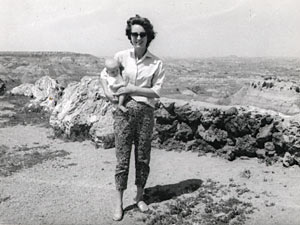

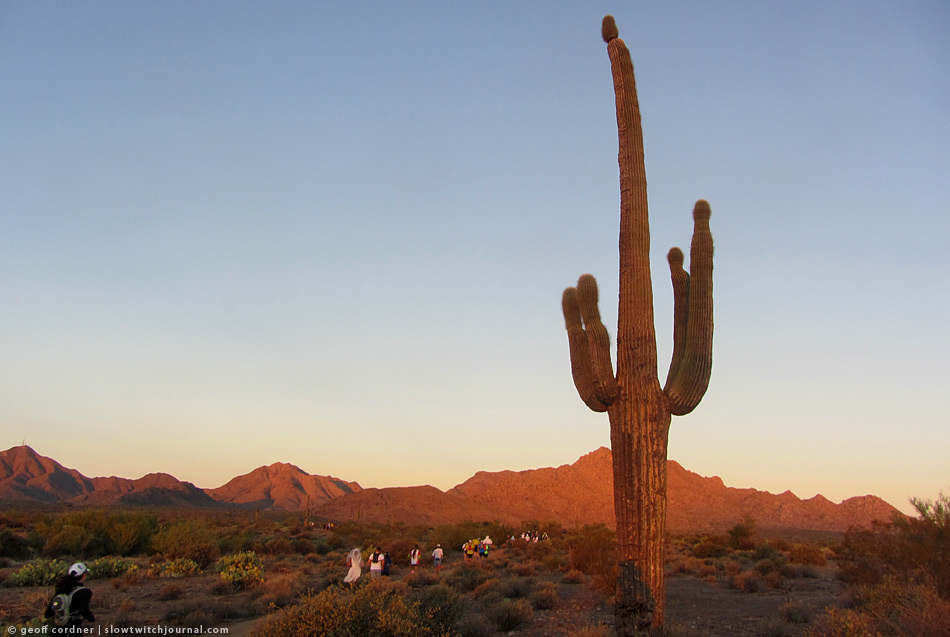




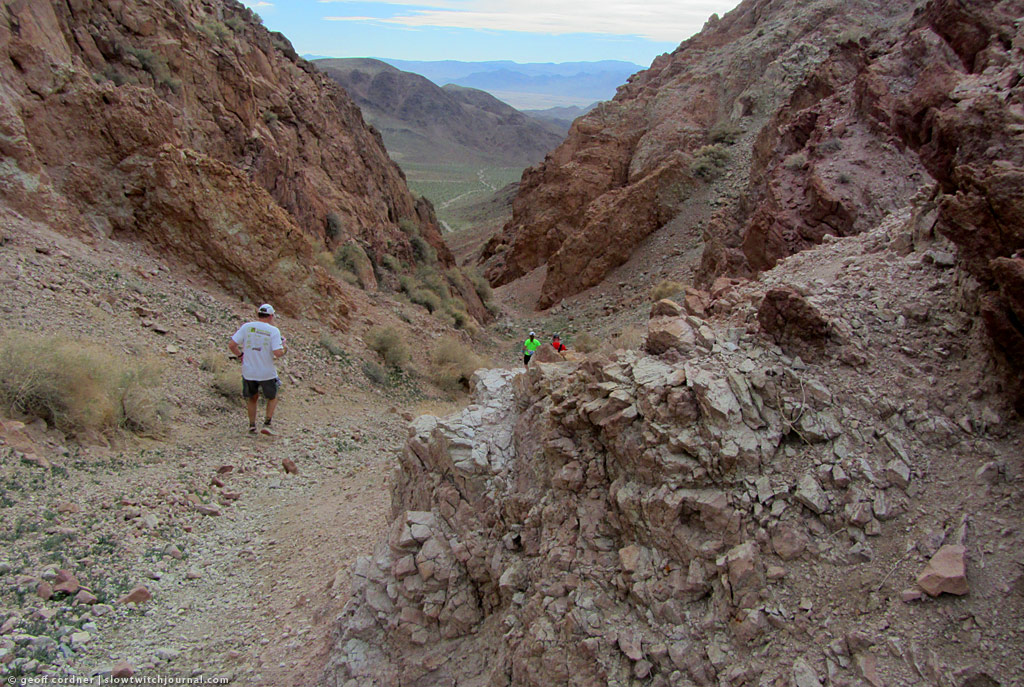
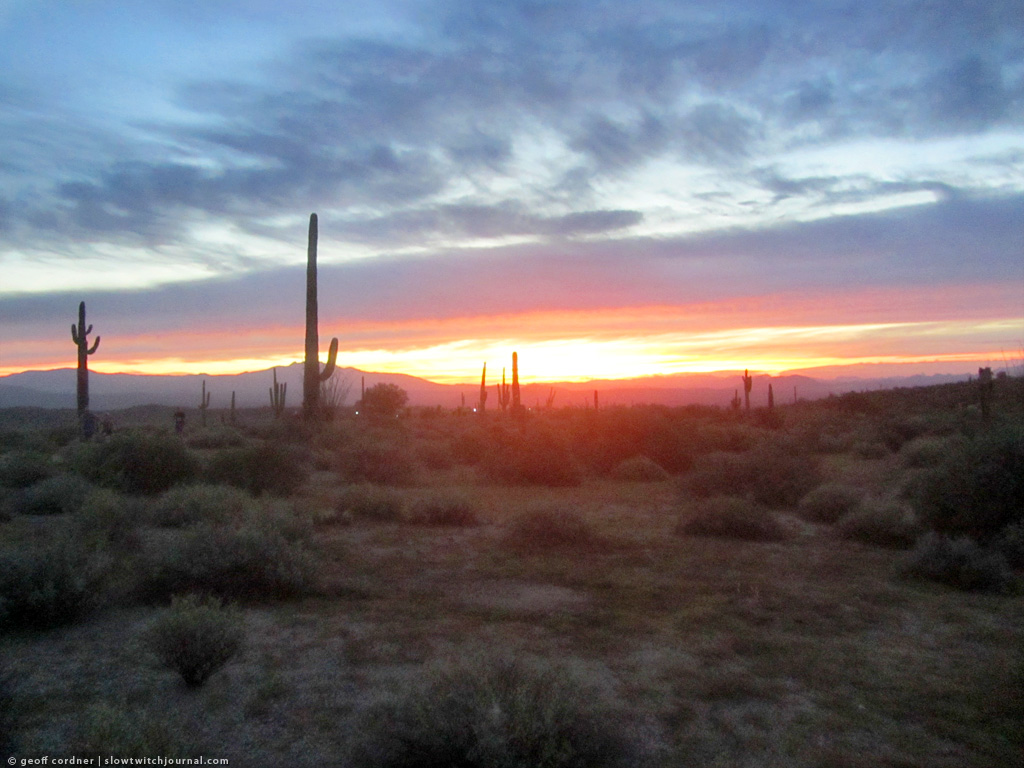
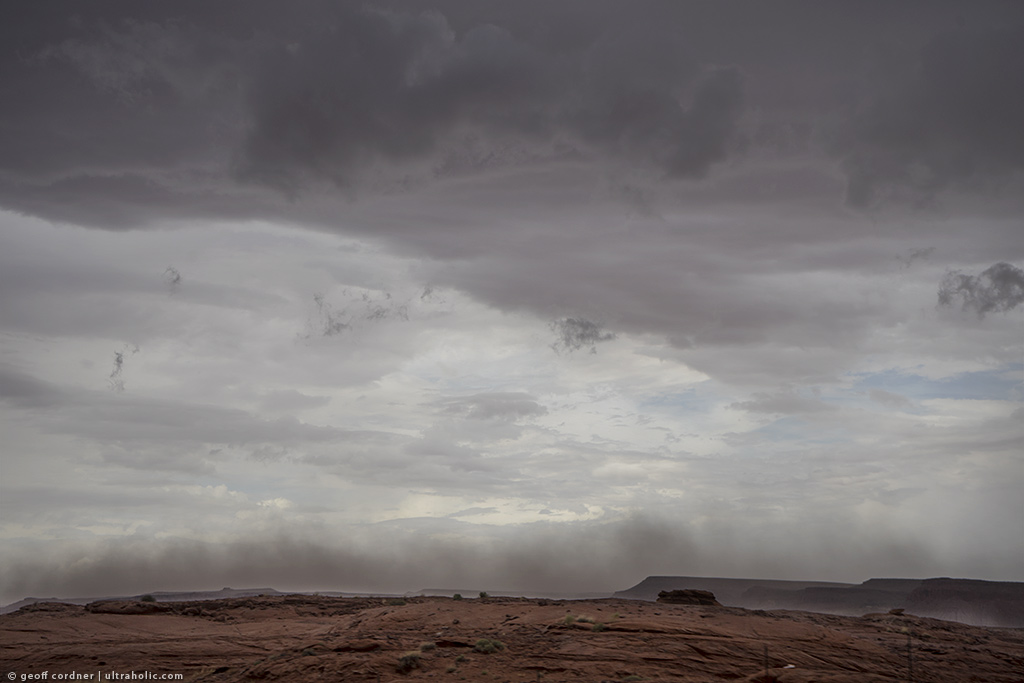
Wow, what a great race report! It was seriously a pleasure to read, thank you! So beautiful. And funny, and real, and I enjoyed your middle of the pack story a lot. My hat is off to you having such a good, happy day out there. Very impressive!
Thanks, Leslie! It was great meeting you the day before.
Really great read! Thanks for writing it. I have a much battered copy of “The Living Desert” also. I hope to someday have a BC 100K buckle too.